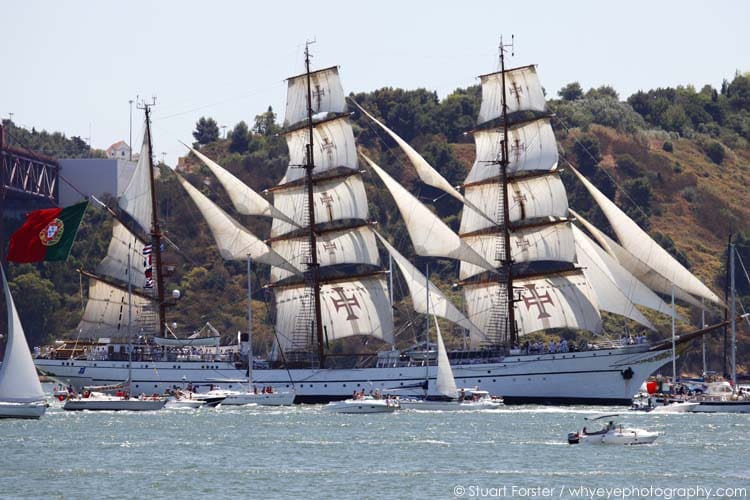Stuart Forster looks at the insights into naval history that can be gleaned from model shipbuilding in museums around the world.
People have been building models of boats and ships for millennia. These days, thanks to the internet, you don’t even have to leave the comfort of your own home to dip your toe in the water, so to speak, and start putting together a kit or begin building a collection.
International Maritime Museum in Hamburg
Time and a lot of effort will be needed to acquire a collection matching the breadth and scope of that put together by Peter Tamm, whose models form just a part of the International Maritime Museum in Hamburg, Germany. Hamburg, a major port city, has a long tradition of seafaring and one of the aims of the museum, which exhibits artefacts over ten floors, is the preservation of knowledge relating to the subject and naval history.
Models are much more than mere toys and modelling is not just a means of whiling away an evening, though many people do enjoy it as a hobby. Model ships can also help shed light on otherwise long-lost aspects of maritime history.
The Louvre in Paris
The oldest model ships have been unearthed by archaeologists. A beautifully preserved 4,000-year-old model, found in an Egyptian tomb, can be seen in the Louvre Museum in Paris, France. Figures representing humans stand and squat along the deck of the 67-centimetre (26.4-inch) boat. This helps us to understand how ancient boats would have looked on the Nile Delta.
Thanks to models which have been found, historians and archaeologists have been able to develop theories as to how full-sized boats and ships would have looked during and beyond classical antiquity. Descriptions in literature and depictions on pottery are just two of the sources that researchers use to complement their understanding and interpretation of ancient models and to hypothesize how full-size ships would have looked and functioned.
Shipping in the ancient world
Inevitably, the models which have been found at Phoenician and Ancient Greek sites depict a range of vessels, from small boats and merchantmen up to ships of war. They are built from a variety of materials, including wood, lead and precious metals. Some were used as toys, others were decorative and some would have been used on shrines to pray for the safe return of loved ones travelling over water.
These days – in an age of computer modelling and detailed designs – it might come as a surprise but drawing up blueprints of ships is a fairly recent development. Up until about 300 years ago, shipwrights would often win commissions after showing potential patrons models rather than designs on paper. Some of these have survived to become collectors’ items.
Models for the British Admiralty
Some of the most highly sought-after model ships are those which were viewed by decision-makers at Britain’s Admiralty, who would commission warships after detailed scale models had been examined. These are known as Admiralty or Navy Board models, and provide a valuable source of information for historians as well as the modellers of today.
The craftsmanship and time spent in producing top-quality model ships mean that the best can command hefty prices. Immense attention to detail is needed to build museum-quality models. They have to display every aspect seen on the original ship or, should it no longer exist, depict all that is shown in faithful oil paintings, commissioned when the vessel was still afloat. The knowledge that goes into building the miniatures coupled with the skill of the handiwork means that the best models cross the line from being regarded as unique examples of work by a skilled artisan into works of art.
The world’s most expensive model ship
Many valuable and highly detailed models belong to private collectors who make acquisitions quietly, shying away from publicity. Consequently, it’s difficult to say with precision which model ship is the world’s most expensive. One candidate for that term dates from late in the seventeenth century. It is a 1:32 scale model of the royal yacht used by Britain’s joint monarchs, William and Mary. The model reportedly changed hands for $439,875.
New Bedford Whaling Museum
The Lagoda, on display within the Bourne Building of the New Bedford Whaling Museum in Massachusetts, USA, is the world’s biggest model ship. You might even describe the Lagoda, which was commissioned to be built in 1916, as a whale of a model. At 89 feet (27.13-metre) long this 1:2 scale model is half the size of the original vessel, which saw service as a whaler from the 1840s.
Scotland’s Museum of Transport and Travel
The Riverside Museum, Scotland’s Museum of Transport and Travel, claims the world’s largest collection of model ships. Glasgow Museums owns 788 models, many of which represent vessels built in the shipyards of the River Clyde, including renowned ships such as the RMS Queen Mary and the Lusitania.
Numerous enthusiasts model around the world but Malcolm Harwood is one of the few to have transformed his hobby and passion into his profession. The Managing Director of Cornwall Model Boats started building models while he was still at school, after seeing people sailing models on the lake in London’s Bushy Park. His company makes a range of models, some that run on water and others for display.
Personal taste and interest tend to play a role in shaping collections, as Malcolm points out: “In terms of models that are collectable, a lot of that’s down to the actual build of the model and the quality that the builder’s impressed in the model and the subject material. In the UK we tend to find that people prefer British ships rather than French or Spanish galleons. One that’s always popular over here is the Victory as everyone knows it and you can go and visit it. In terms of collectability, people now tend to build their own whereas the older models constructed several decades ago, tend to fetch quite a high value if they have been constructed properly.”
Fully rigged sailing ships are often the starting points of collections. “We find here that a lot of people are fascinated by the tall ships, just for their sheer beauty when actually constructed as a model and the fact there aren’t that many left around,” says Malcolm.
Going online and ordering kits to construct pre-built models, via specialist internet sites, is one way of starting a collection. Setting sail on this long-established hobby has never been easier and there are plenty of museums around the world that can provide inspiration.
Further information
Photos illustrating this post are by Why Eye Photography.
‘Like’ the Go Eat Do Facebook page to see more photos and content.
If you enjoyed this post why not sign up for the free Go Eat Do newsletter? It’s a hassle-free way of getting links to posts on a monthly basis.




